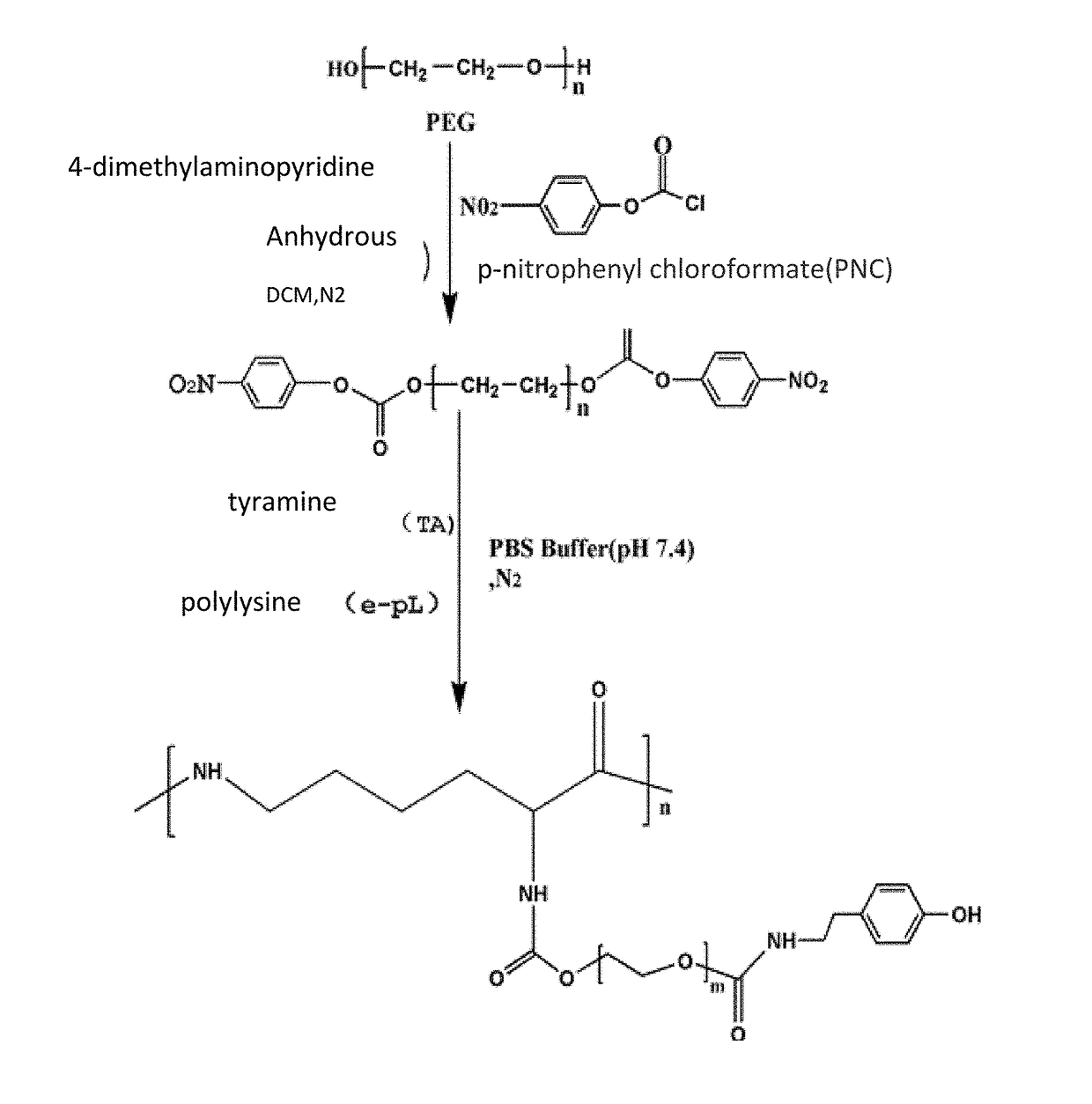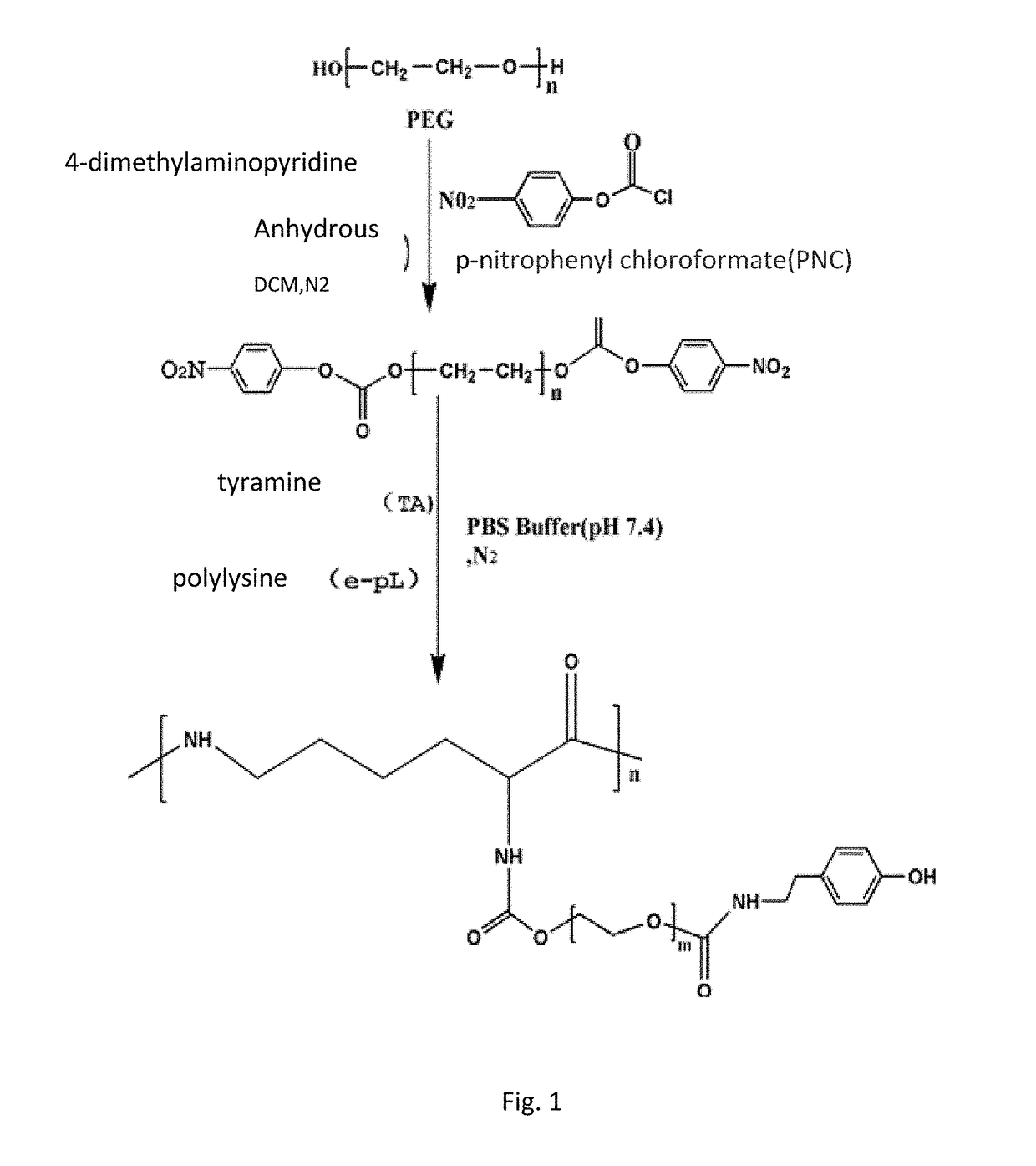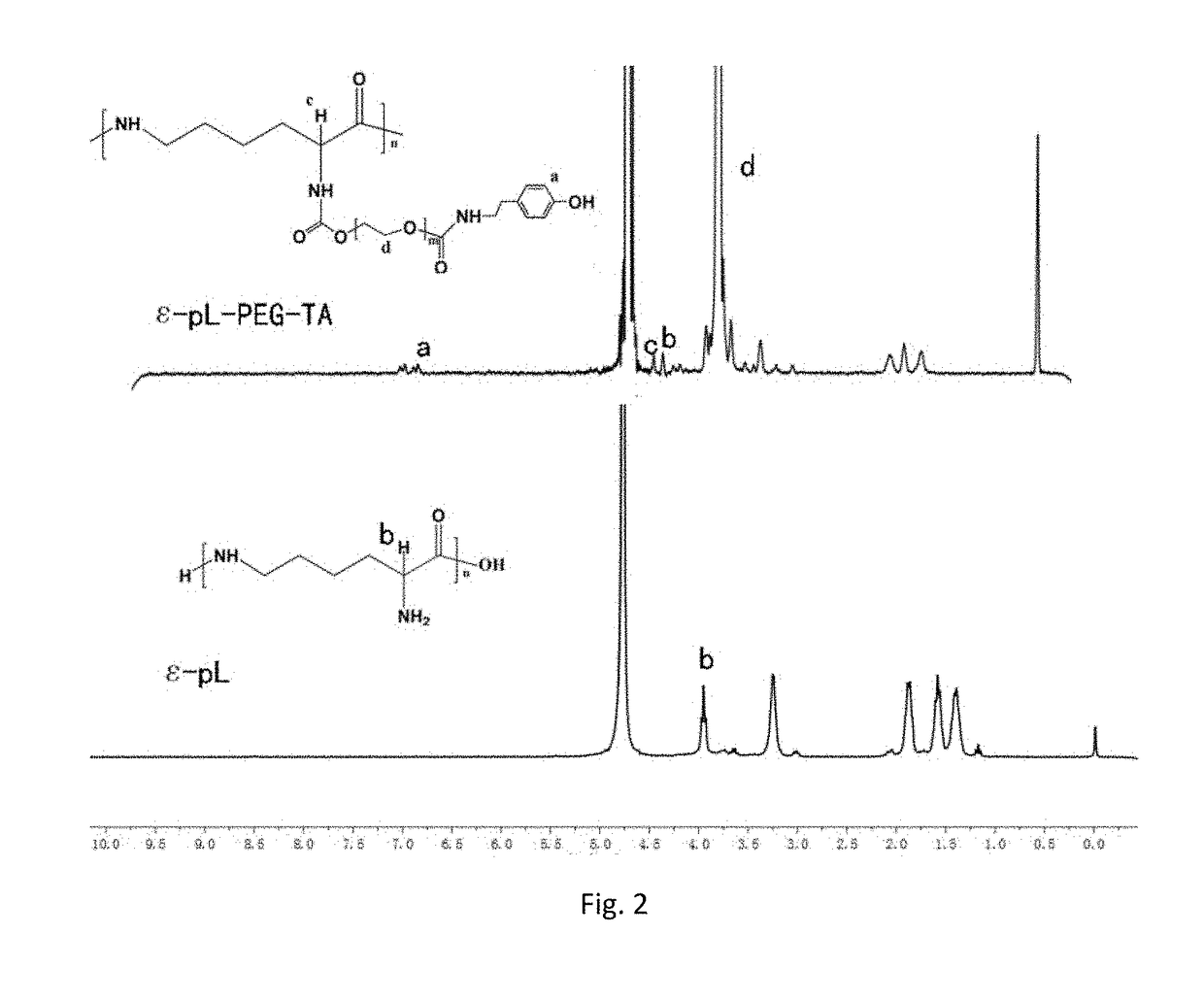E-polylysine hydrogel and preparation method and application thereof
a polylysine hydrogel and hydrogel technology, applied in the field of medical technology, can solve the problems of limiting the wide application of clinical surgery, blood virus infection, pain in patients, etc., and achieves the effects of short gelation time, mild reaction condition, and high mechanical strength
- Summary
- Abstract
- Description
- Claims
- Application Information
AI Technical Summary
Benefits of technology
Problems solved by technology
Method used
Image
Examples
example 1
on of PNC-PEG-PNC
[0061]20 g (5 mmol) of PEG4000 was weighed and placed into a 500 ml three-neck flask under room temperature and anhydrous and oxygen-free condition, and 400 ml anhydrous dichlormethane was added to the flask, after PEG was completely dissolved under magnetic stirring. Then 1.832 g (15 mmol) of DMAP and 1.518 g (15 mmol) of TEA were added, stirred and reacted for 30 min under room temperature and nitrogen gas shielding. The reaction was added dropwisely into 3.022 g (15 mmol) PNC solution (using 100 ml anhydrous dichlormethane as the solvent), after addition is completed at room temperature the reaction solution was concentrated to 25 ml with a rotary evaporator, then added dropwisely into a cold diethyl ether of −4° C., the amount of the cold diethyl ether was 750 ml, after the formed precipitate was removed by filtration, and freeze-dried at −60° C. at 10 Pa vacuum to obtain a PNC-PEG-PNC copolymer, the yield was 79%.
example 2
on of PNC-PEG-PNC
[0062]PEG4000 20 g (5 mmol) was weighed and placed into a 500 ml three-neck flask under room temperature and anhydrous and oxygen-free condition, and 200 ml anhydrous dichlormethane was added to the flask. Then PEG was completely dissolved under magnetic stirring. 1.832 g (15 mmol) of DMAP and 1.518 g (15 mmol) of TEA were added, stirred and reacted at room temperature for 30 min, after completion of reaction it was added dropwisely to 3.022 g (15 mmol) of PNC solution (using 100 ml anhydrous dichlormethane as the solvent), after addition is complete stirred and reacted for 24 hours under room temperature and nitrogen gas shielding, after completion of reaction. The reaction solution was concentrated to 15 ml with a rotary evaporator, then added dropwisely into a cold diethyl ether of −4° C., the amount of the cold diethyl ether was 450 ml, the formed precipitate was removed by filtration, then vacuum freeze-dried under −60° C. at 10 Pa to obtain a PNC-PEG-PNC copol...
example 3
on of PNC-PEG-PNC
[0063]PEG6000 20 g (5 mmol) was weighed and placed into a 500 ml threer-neck flask under room temperature and anhydrous and oxygen-free condition, and 100 ml of anhydrous dichlormethane was added to the flask. Then the PEG was completely dissolved under magnetic stirring 1.832 g (15 mmol) of DMAP and 1.518 g (15 mmol) of TEA were added, stirred and reacted at room temperature for 30 minutes, after completion of reaction it was added dropwisely into a 3.022 g (15 mmol) of PNC solution (using 100 ml anhydrous dichlormethane as the solvent), after addition is completed stirred and reacted for 24 hours at room temperature and under nitrogen gas shielding, after completion of reaction. The reaction solution was concentrated to 10 ml with a rotary evaporator, then added dropwisely into a cold diethyl ether of −4° C., the amount of the cold diethyl ether was 300 ml, the formed precipitate was removed by filtration then freeze-dried under −60° C. at 10 Pa vacuum to obtain a...
PUM
| Property | Measurement | Unit |
|---|---|---|
| concentration | aaaaa | aaaaa |
| concentration | aaaaa | aaaaa |
| temperature | aaaaa | aaaaa |
Abstract
Description
Claims
Application Information
 Login to View More
Login to View More - R&D
- Intellectual Property
- Life Sciences
- Materials
- Tech Scout
- Unparalleled Data Quality
- Higher Quality Content
- 60% Fewer Hallucinations
Browse by: Latest US Patents, China's latest patents, Technical Efficacy Thesaurus, Application Domain, Technology Topic, Popular Technical Reports.
© 2025 PatSnap. All rights reserved.Legal|Privacy policy|Modern Slavery Act Transparency Statement|Sitemap|About US| Contact US: help@patsnap.com



